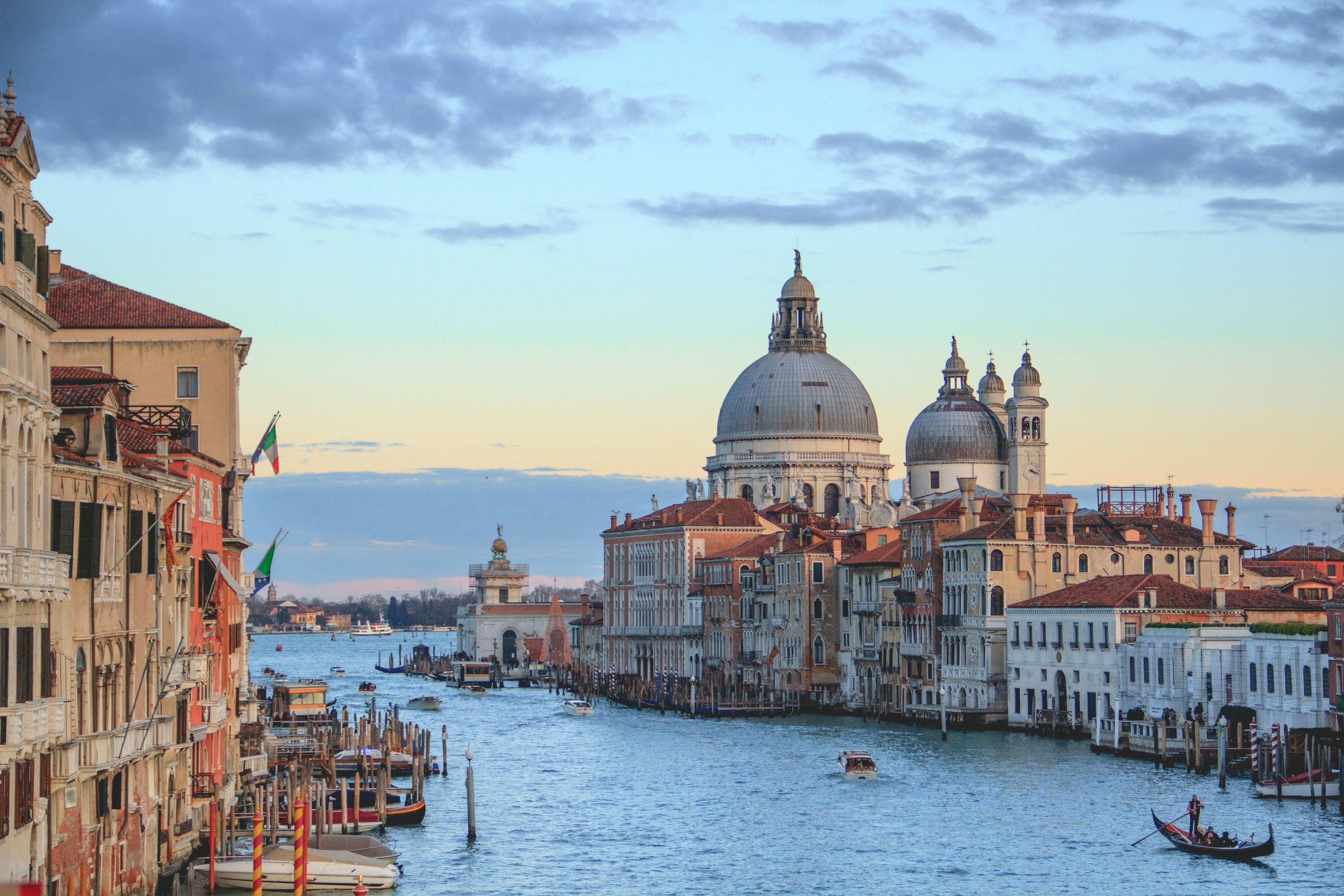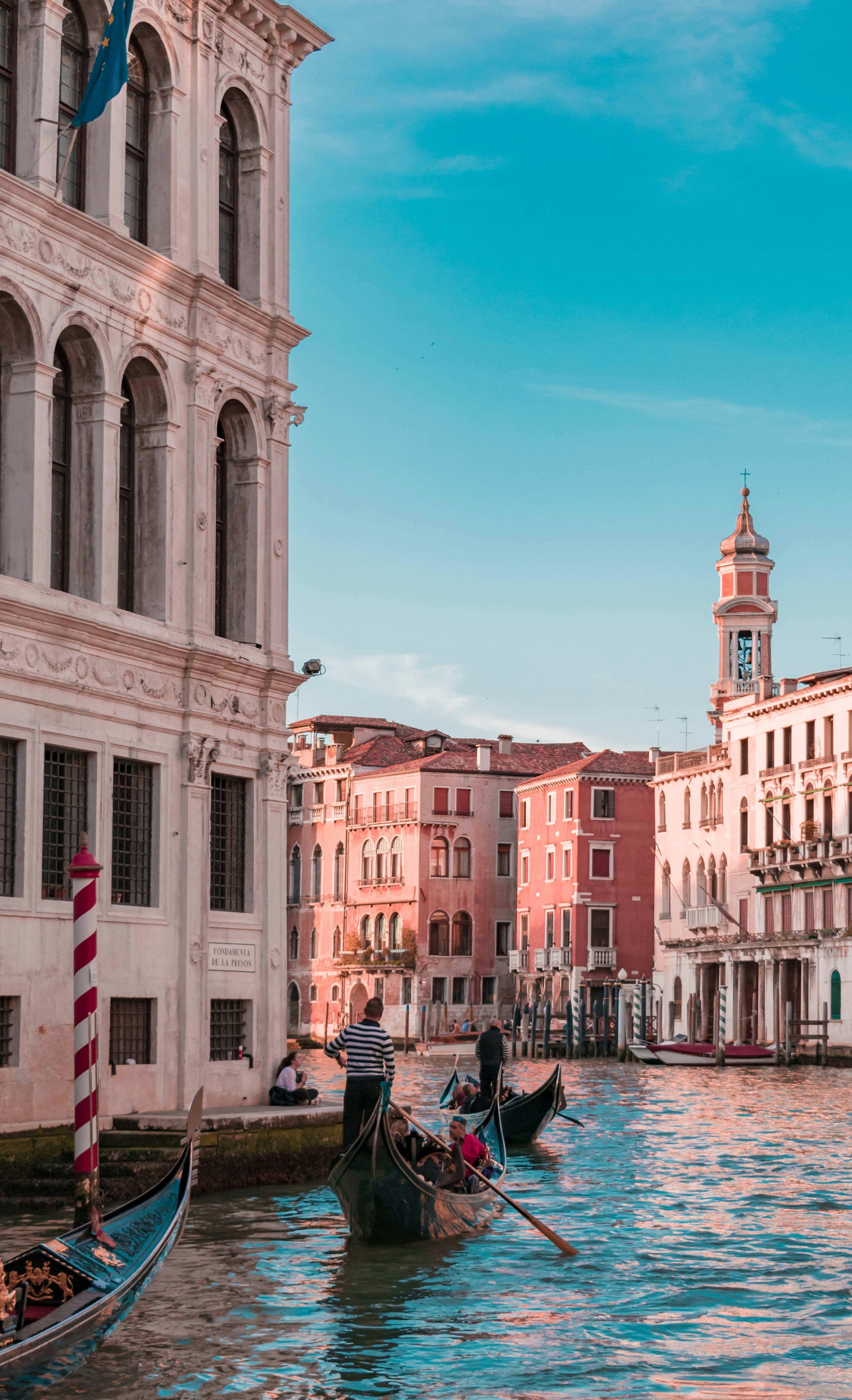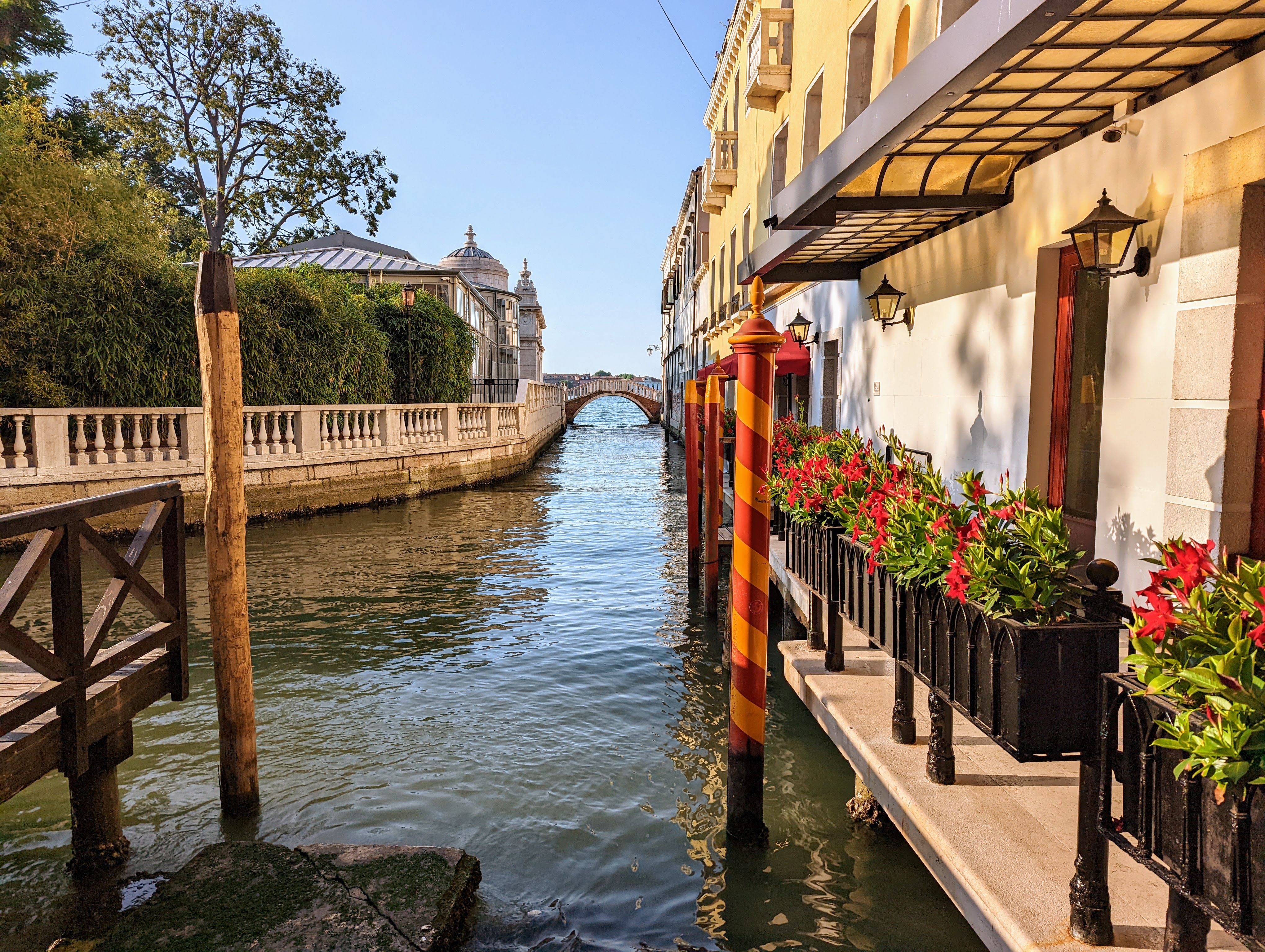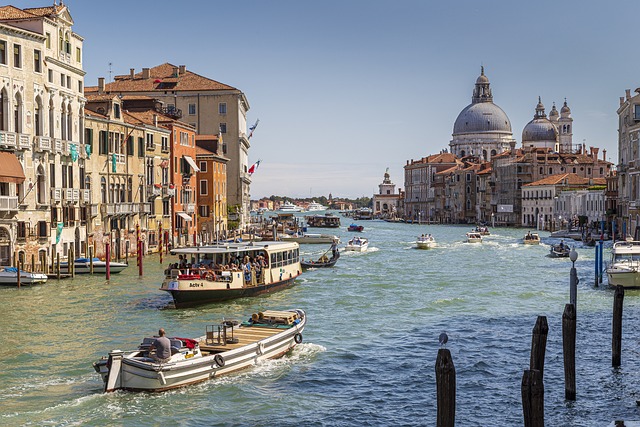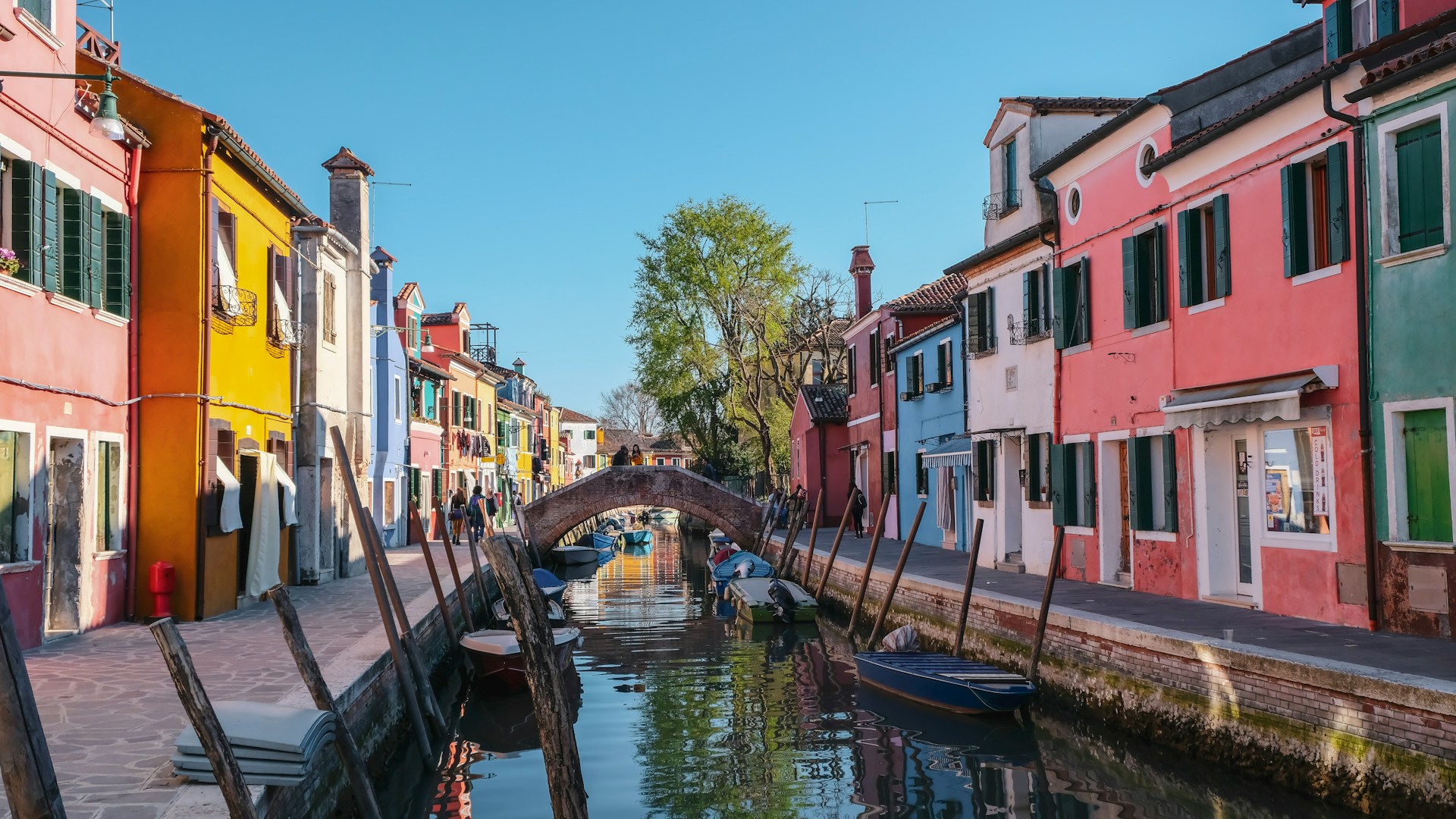- Home
- Venice
VENICE, LA SERENISSIMA
Venice is one of the most visited cities in Italy and in the world, and features on the itinerary of many first-time visitors to Italy.
This section of Italy Whiz is a Venice Travel Guide dedicated entirely to La Serenissima, the Most Serene.
In here, you'll find all you need to know about this marvellous wonder of a city that has a special place in my heart.
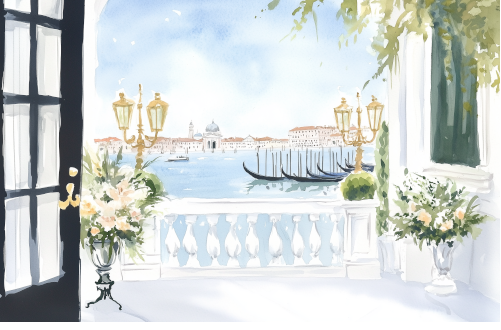
"Venice, its temples and palaces did seem like fabrics of enchantment piled to heaven."
- Percy Bysshe Shelley
Why You Should Visit Venice
Venezia attracts millions of tourists annually and has done so for centuries.
When you visit this city, you're not just ticking off another destination—you’re entering a world of enchantment.
Here are some reasons why visiting La Serenissima is a must:
1. It's Unique
Venice is unlike anywhere else.
The moment you step out of the train station and see the Grand Canal, it feels like you’ve walked into a painting.
There are no cars—just boats gliding through the water, and narrow alleyways that twist and turn until suddenly you’re in a quiet square with a beautiful church or a hidden café.
It’s not just the beauty—it’s the atmosphere. Venice feels timeless.
You can be sipping a thick hot chocolate at Caffè Florian, just like writers and composers did centuries ago, and then find yourself alone on a misty bridge, hearing nothing but your footsteps and the soft splash of water.
It’s magical, a bit mysterious, and completely unforgettable.
Just wander. Don’t even worry about where you’re going—you’ll always find something special.
2. Iconic Sights
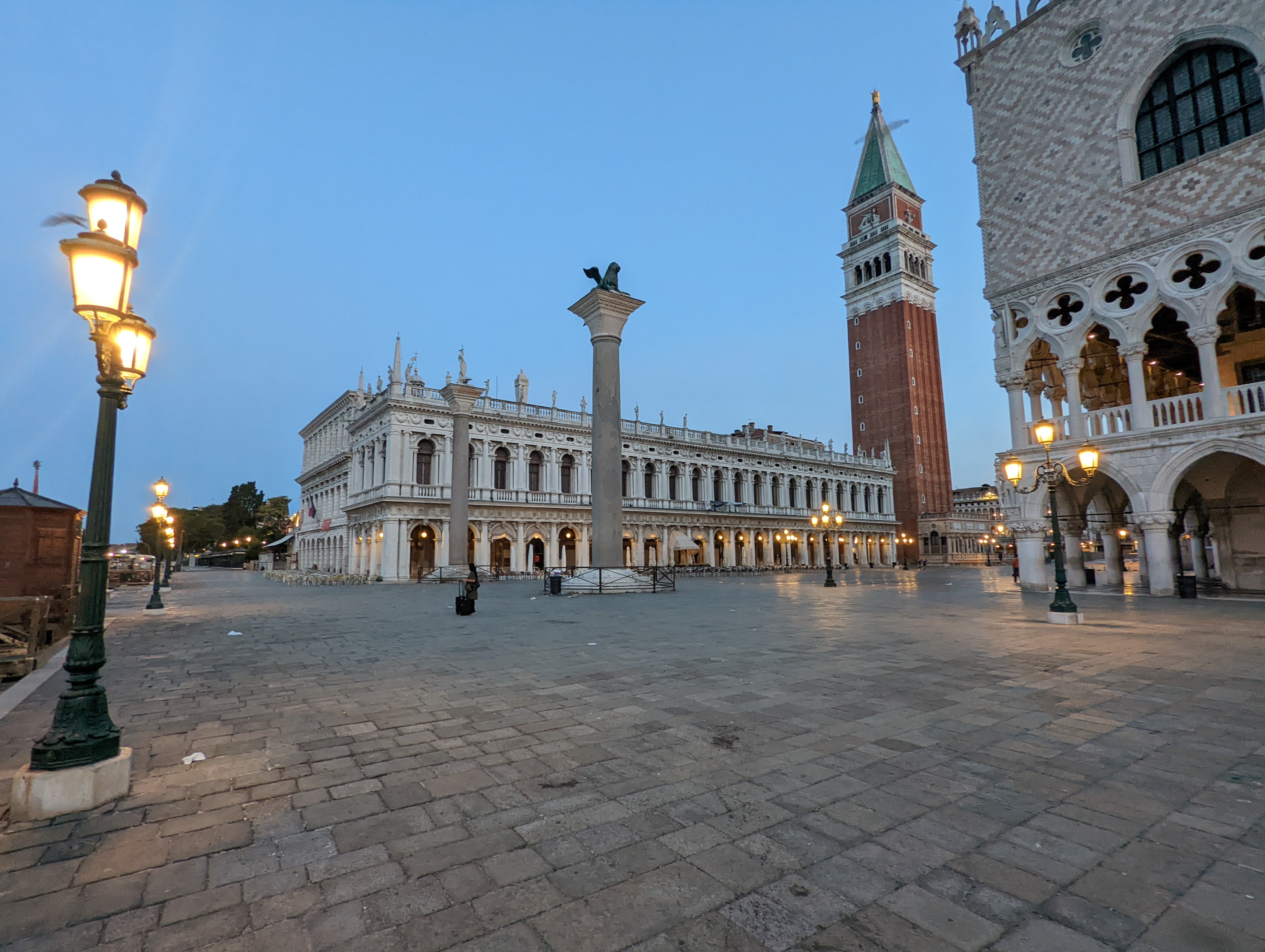 The Riva off Piazza San Marco
The Riva off Piazza San MarcoThink St. Mark’s Basilica, the towering Campanile, and St. Mark's lion on the column in front of the Doge’s Palace, not to mention the Bridge of Sighs.
A gondola ride or a more economic vaporetto trip along the Grand Canal is a must to see the ornate palazzi and historic bridges.
You’ll also want to explore the lively Rialto Market, explore the streets of Cannaregio, and take a day trip to the colourful islands of Murano and Burano.
Art lovers shouldn’t miss the modern art collection at the Peggy Guggenheim Museum, housed in her former Grand Canal home.
For more traditional works, the Gallerie dell’Accademia has a stunning collection of Venetian painting.
3. Off the Beaten Track: Escaping the Crowds
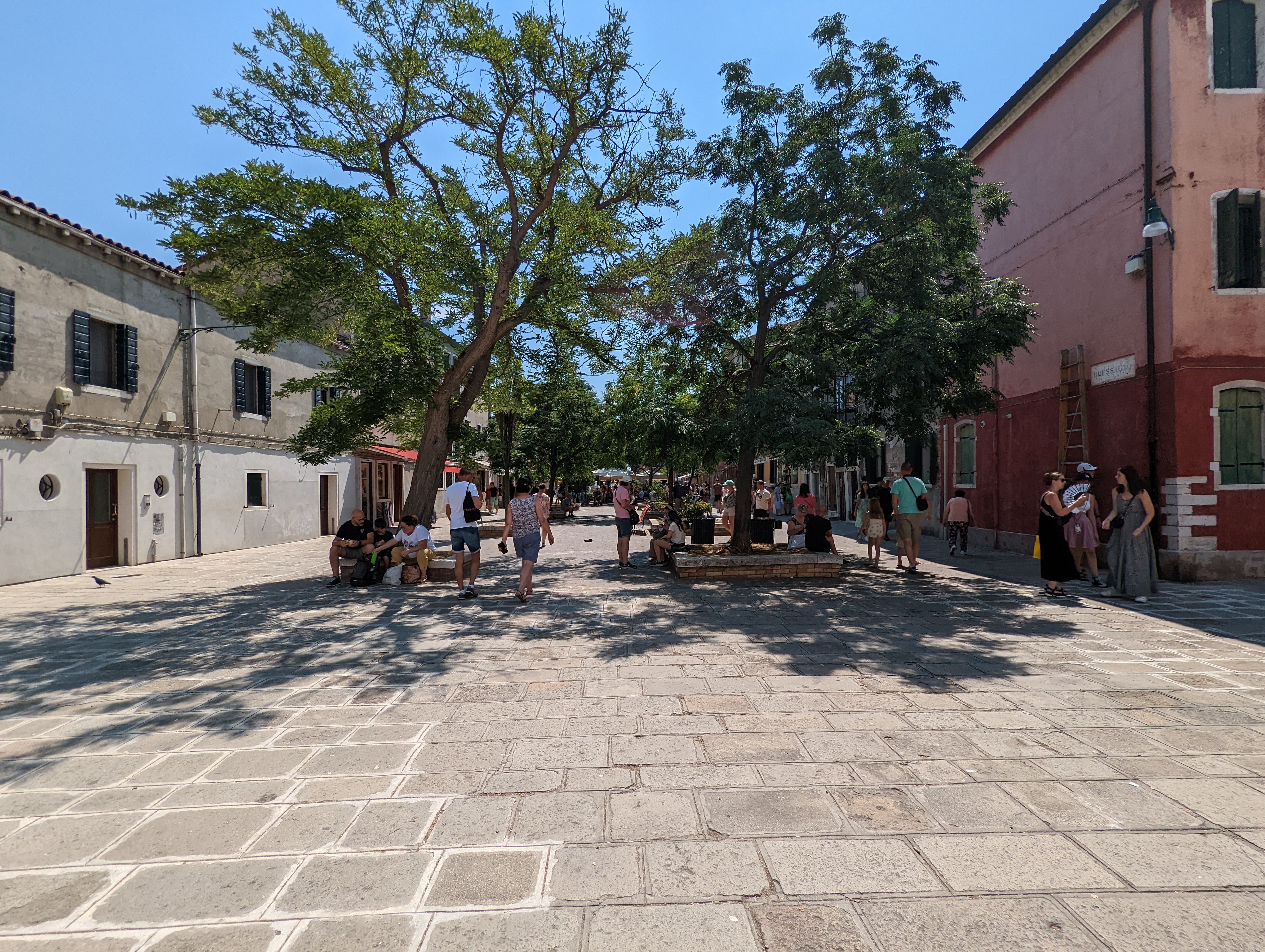 A quiet square off the beaten track
A quiet square off the beaten trackVenice is much more than its famous landmarks.
To escape the crowds, wander beyond St Mark’s Square, the Rialto, and the Riva degli Schiavoni.
You’ll find quieter streets and a more authentic side of the city.
I particularly like wandering around the Dorsoduro district, which you can access from the bridges on the Grand Canal, such as the Rialto or Accademia bridges, or by vaporetto.
Known for its artistic vibe, this district offers charming squares, very good restaurants and stunning views.
The island of Giudecca is also very quiet and provides some of the most breath-taking vistas of the lagoon.
Murano and Burano, famous for glassmaking and lacework, are also generally less crowded, especially in the off-season.
For more information on the islands of Venice, click here.
4. The Food

The food in Venice is a treat—simple, fresh, and full of flavour.
Try hopping between little bàcari (Venetian wine bars), trying cicchetti—small bites like marinated anchovies, stuffed zucchini flowers, or tiny meatballs—with a glass of local wine.
Or try the street food on the go as you walk around the city.
Definitely try sarde in saor if you see it on the menu—it’s a sweet-and-sour sardine dish that sounds odd but tastes amazing.
And if you have a sweet tooth, don’t miss the thick, velvety hot chocolate and the sweet pastries at Caffè Florian in St. Mark’s Square. It’s pure indulgence.
5. A Different Kind of Shopping
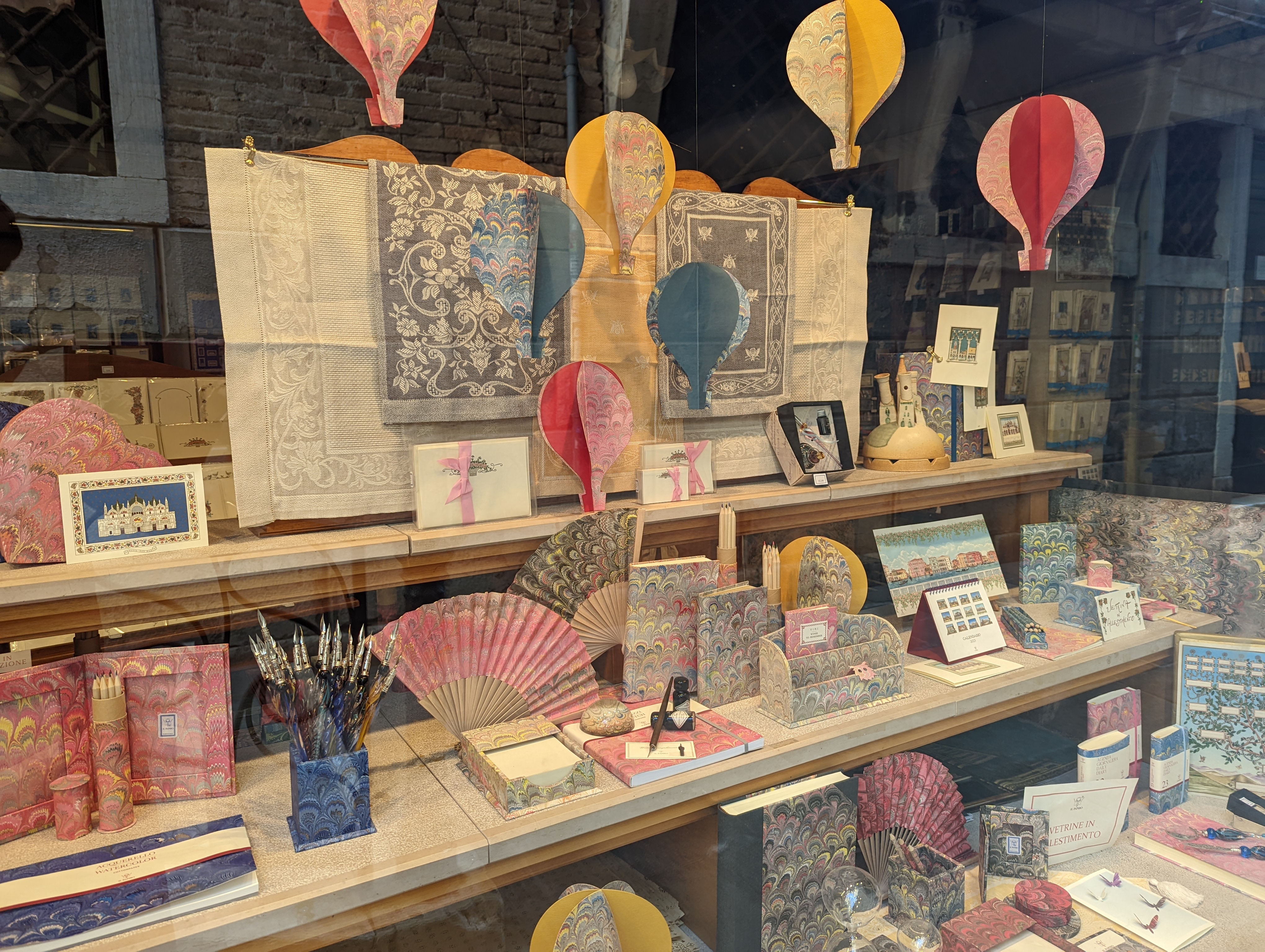 Marbled paper and paper products are typical of Venice
Marbled paper and paper products are typical of VeniceShopping in Venice is not about big brands or flashy malls.
It's about discovering beautiful, handmade things you can’t find anywhere else.
I love wandering through the narrow streets and stumbling upon little artisan workshops where you can see craftsmen make objects out of glass.
You can also get beautiful Burano lace, gorgeous hand-bound notebooks or marbled paper, or authentic masks made from papier‑mâché or leather.
If you're into fashion, there are small boutiques with stylish Italian pieces you won’t see outside of Venice.
Taking your time to explore pays off—you never know what treasure you’ll come across tucked behind a tiny doorway or along a quiet canal.
6. Cultural & Artistic Scene and Nightlife
 The Venice Film Festival
The Venice Film FestivalVenice may feel like a city suspended in time, but its cultural and artistic scene is anything but static.
From centuries-old traditions to cutting-edge exhibitions, there’s always something inspiring happening.
Annual traditional occurrences include:
🎭 Carnival (February)
🌊 Festa della Sensa – Marriage of the Sea (May)
✝️ Festa del Redentore - Feast of the Redeemer (Third weekend in July)
🚣♂️ Regata Storica (First Sunday of September)
🌟 La Salute - thanksgiving for deliverance from the plague of 1630 (21 November)
But Venice is also a stage for contemporary creativity.
Every two years, the Venice Biennale transforms the city into an international hub of contemporary art, architecture, film, dance, and theatre.
Even outside Biennale season, you’ll find thought-provoking installations tucked into historic buildings and local festivals celebrating music, performance, and traditional crafts.
As regards nightlife, Venice is more elegant than rowdy, more wine bar than nightclub.
After sunset, locals and visitors gather in bàcari (traditional wine bars) for a relaxed evening of cicchetti and ombra (a glass of local wine).
Areas like Cannaregio and Dorsoduro are perfect for this—especially along Fondamenta della Misericordia, where bars stay lively well into the night.
For something more refined, you can catch a classical concert in a candlelit church, a performance at the stunning Teatro La Fenice, or enjoy live jazz or DJ sets in atmospheric spots like Venice Jazz Club or Chet Bar.
It’s not about partying till dawn—it’s about soaking in the mood, the music, and the beauty of Venice after dark.
When to Visit Venice
 Piazza San Marco in Summer
Piazza San Marco in SummerVenice is a year-round destination, but some seasons are quieter and less crowded than others.
My favourite times to visit are Winter, Spring, and Autumn, when there are fewer tourists (except during Carnival, which is the most crowded time of the year). Cooler air and smaller crowds make for a better experience.
That being said, I have also visited Venice several times during Summer - especially in August-September for the Venice Film Festival.
In summer, the city is packed with cruise passengers, day-trippers, and holidaymakers. Overcrowding peaks, and navigating the main attractions can feel overwhelming.
To decide which season suits you best, have a look at this guide here.
To check whether your vacation dates coincide with Venice Access Fee days, click here.
Experiencing Venice: Early Mornings and Late Nights
I have found that early morning and late at night are the best times to see Venice at its best and to shoot the best photos.
Early Morning: This is the best time to visit landmarks like the Bridge of Sighs or the Rialto, before most tourists are up and about, and before the day-trippers arrive.
An early start also pays off if you’re there during Carnival.
Piazza San Marco and the Bridge of Sighs come alive with people in fabulous costumes, posing for photo shoots in the soft morning light. And yes, you can join in and take pictures too—I’ve done it many times!
Early morning, you can also get a glimpse of everyday Venice: barges delivering goods cruising down the Grand Canal, or friendly neighbourhood cats greeting delivery persons hoping for a treat.
You can sit down in a bar with the locals and have coffee and a cornetto for breakfast, or travel peacefully on the vaporetti without getting squashed.
Late Night: Another good time to see Venice without the crowds is late at night. You can stroll through the quiet piazzas, listen to the gentle lap of water against gondolas, catch musicians performing in the cafes.
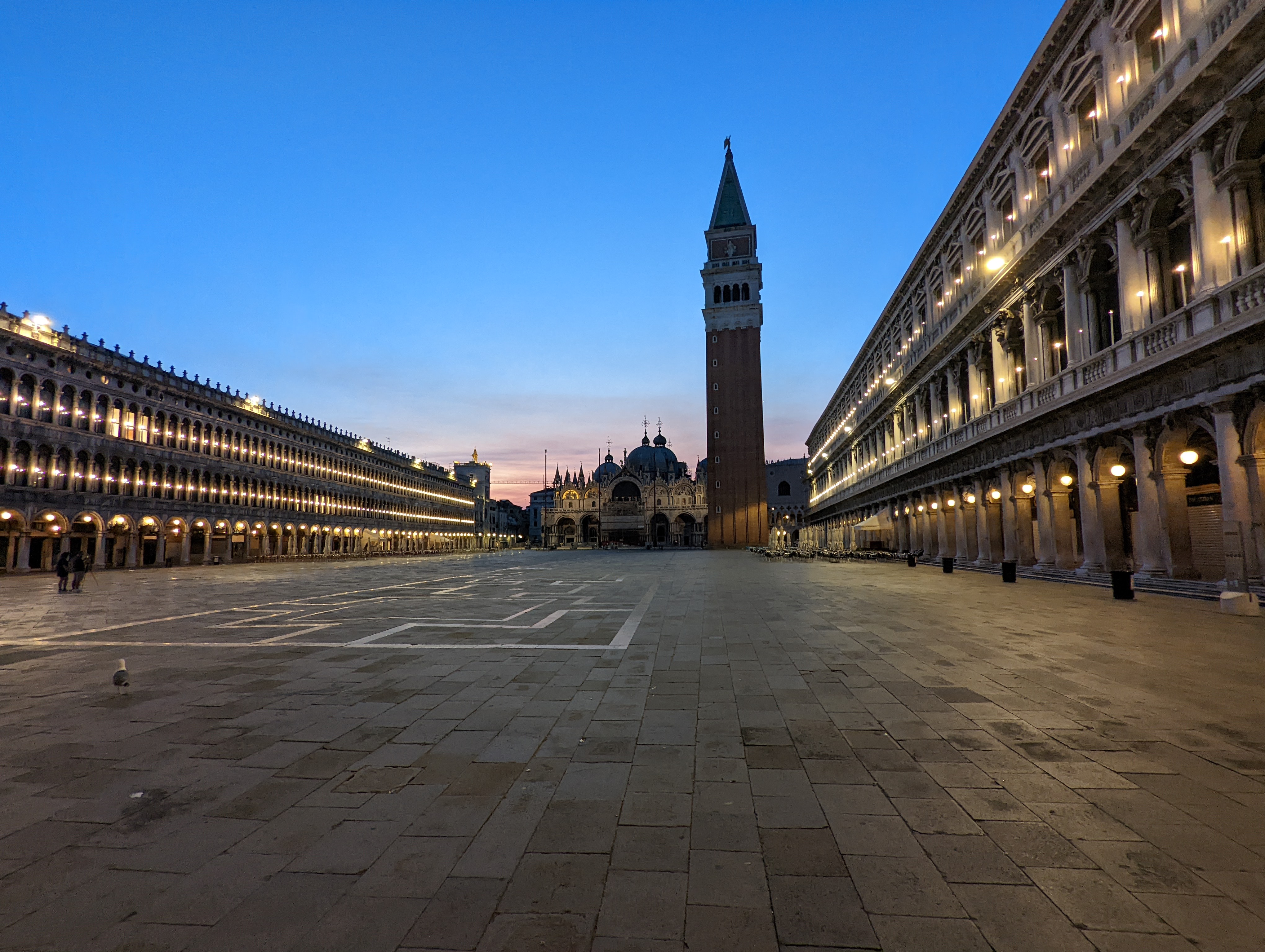 Piazza San Marco at Night
Piazza San Marco at NightThe
Best Way to See Venice
By far the best way to see Venice is to get lost in its calli, away from the main attractions.
Wandering is an amazing way to discover a more authentic Venice, and less touristy areas, restaurants and bars.
Wandering aimlessly through Venice, I’ve discovered beautiful churches and palaces that aren’t mentioned in any guidebook, sleepy little piazzas where you can have a quiet drink and read a book, trattorie serving very good food typical of the Veneto region, and artisanal workshops where I’ve watched craftsmen create traditional leather masks by hand.
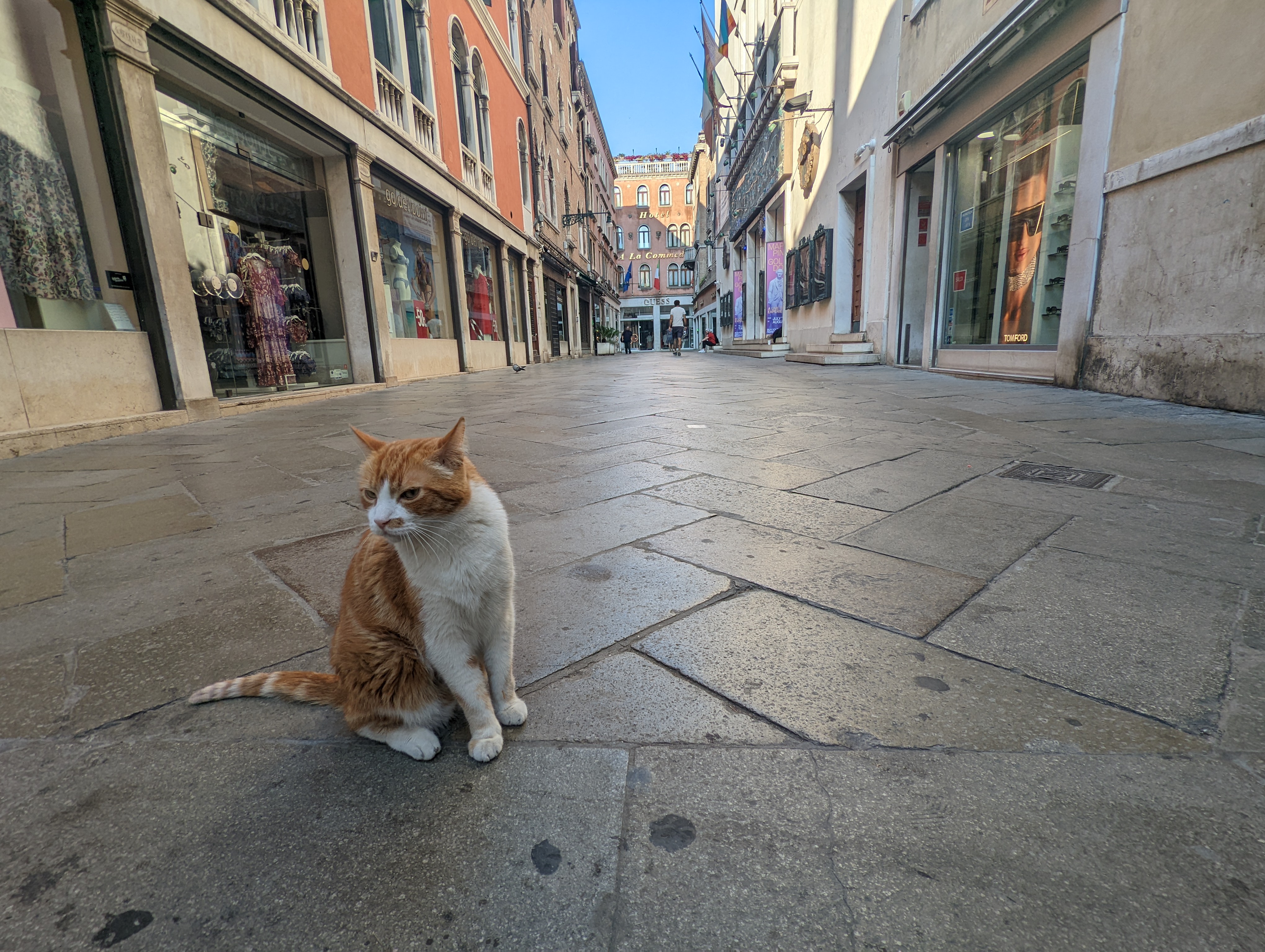 A Venetian cat I met during early morning wanderings
A Venetian cat I met during early morning wanderingsVenice is a city of contrasts—grand yet intimate, bustling yet serene. Whether you’re drawn to its historic landmarks, quiet corners, or the everyday rhythm of life on the water, there’s no place quite like it.
